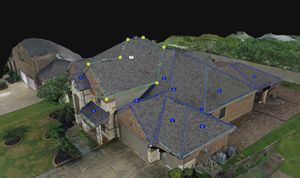Why On-site Data is Crucial for Solar Designers
Designers need a plethora of information to build a full plan set-most of which comes from an on-site survey. When Surveyors collect on-site information with drones and mobile apps, Designers can easily access everything they need to streamline plan set development.
Due Diligence 101-Part 4: Decoding Solar Farm System Design
This is the fourth in our series on important things to keep in mind when performing technical due diligence on a solar asset.
Due Diligence 101-Part 3: Performance Modeling for Existing Solar Arrays
This is the third in a series of blogs outlining important considerations when performing technical due diligence on a solar asset.
Due Diligence 101-Part 2: Choosing the Right Technology When Acquiring a Solar Farm
This is the second in a series of blogs outlining important considerations when performing technical due diligence on a solar asset.
Due Diligence 101-Part 1: Assessing the site of a solar array
This is the first in a series of blogs outlining important considerations when performing technical due diligence on a solar asset.
The Streamlined Solar Permitting Solution our Industry Needs
Permitting delays are one of the most problematic aspects of residential solar deployment. Solar projects are governed by a patchwork of laws, regulations, and standards created by a host of governmental entities regarding zoning, construction, and more.
Terabase Energy Completes First Commercial Deployment of Terafab™ Solar Construction Automation System
The benefits demonstrated by this project underscore the transformative potential of automation in advancing solar construction practices, enabling us to accelerate and de-risk our project pipeline
Aerial Thermography Findings from the Field: The Lesser-Known Impact of Shading on Power Production
While each instance of shading is unique and can affect power production to varying degrees, there has been little investigation into whether shading of a single string happens in isolation, or whether it also affects neighboring, non-shaded strings and modules.
Using Digital Twins to Improve Solar Farms
"Utilizing a digital twin changes the picture by minimizing the impact of anomalies in the short term, with a seamless path to restoring power. We think of a digital twin as a ledger that provides an auditable system of record for solar assets that will last 25+ years."
How to Become a Renewable Energy Engineer?
Developing solutions and progressing green technologies are necessary to combat the climate crisis. However, it calls for experts in the renewable energy sector to support environmental recovery and enhance quality of life.
Introducing Aurora Solar's AI Solutions to Drive Solar Adoption and Accelerate a Clean Energy Future
Built on the platform delivering over 100,000+ projects a week, Aurora's AI solutions simultaneously evaluate HD map imagery and LIDAR data to generate 3D models in 30 seconds
Shading Analysis: How To Do It And Get It Right
If you put ten different people up on the same roof with the same handheld shading analysis device or behind the controls of a do-it-yourself (DIY) software platform, you'll most likely end up with ten different results.
The Three Major Methods of Designing a Rooftop Solar System
During the sales and planning phases of a residential rooftop solar project, different methods are used to figure out how to lay out the solar modules on a roof. We will talk about three methods that solar professionals often use during this phase.
Reducing Renewable Energy Installation Risks
Renewable energy is rapidly emerging as an attractive choice for businesses and households alike. Any installation project poses potential safety risks. The goal is to minimize them to keep employees well-protected.
How Digital Marketing Can Grow Your Solar Business
Any solar business who wants to stand out from their competition will have to embrace digital marketing as it is a powerful tool to use to connect with customers.
Records 1 to 15 of 47
Featured Product

HPS EnduraCoilTM Cast Resin Medium Voltage Transformer
HPS EnduraCoil is a high-performance cast resin transformer designed for many demanding and diverse applications while minimizing both installation and maintenance costs. Coils are formed with mineral-filled epoxy, reinforced with fiberglass and cast to provide complete void-free resin impregnation throughout the entire insulation system. HPS EnduraCoil complies with the new NRCan 2019 and DOE 2016 efficiency regulations and is approved by both UL and CSA standards. It is also seismic qualified per IBC 2012/ASCE 7-10/CBC 2013. Cast resin transformers are self-extinguishing in the unlikely event of fire, environmentally friendly and offer greater resistance to short circuits. HPS also offers wide range of accessories for transformer protection and monitoring requirements.











_(1).jpg)



